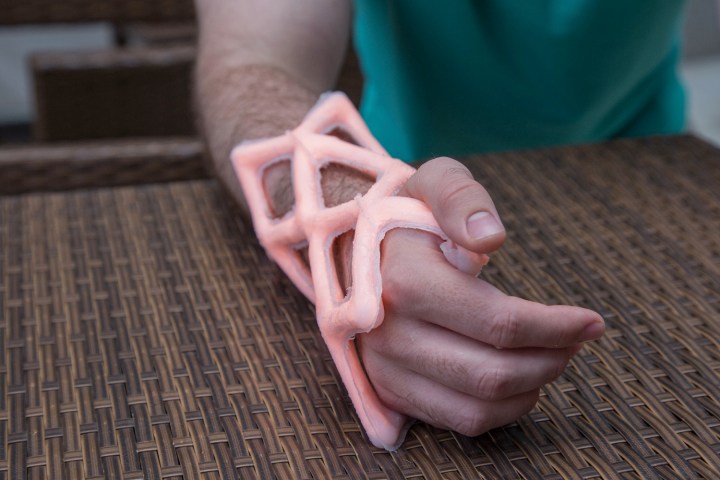
“I have spent much of my life in casts due to birth defects, surgeries, and broken bones, so I am all too familiar with the discomforts of wearing [one],” he told Digital Trends. “After studying biomechanics in college, I decided that there had to be a way to engineer a better cast, so I started Cast21 with the help of my colleagues Ashley and Justin.”
Like the best solutions, the wearable created by Cast21 isn’t just using new materials and tech for the sake of it, though. It’s based on what they saw as the fundamental problems with current fiberglass casts.

“Cast21 addresses the issues of poor hygiene and patient comfort while wearing a traditional orthopedic cast,” Troutner continued. “Anyone who has broken a bone is likely familiar with wearing an itchy and smelly cast for weeks, while taking caution to avoid water. Our cast uses waterproof materials and an open structure to make the bone-healing process as hygienic and unobtrusive as possible. The technology consists of a flexible, hollow sleeve that adapts to the shape of the patient’s limb, and a resin that is injected into the sleeve to harden the sleeve into a rigid, solid structure.”
While the team initially considered 3D-printing custom casts, they found that many orthopedic surgeons and physicians were unwilling to invest in the infrastructure necessary to make it feasible. Instead, they opted for their current design — which has the benefit of being 70 percent lighter than a regular fiberglass cast.
Designing the cast was done partially using optimization algorithms, which helped match designs with the best possible materials. Fitting it requires a medical practitioner to place the sleeve over a patient’s limb and then inject polyurethane resin into its hollow tubes. The hardening process takes as little as 15-20 minutes.
Cast21 is currently waiting for FDA approval for its next-gen cast, while Troutner is continuing to make improvements to the silicone and resin formulas better than ever. Would-be customers shouldn’t be holding their breath too long, however.
“Digital Trends readers can expect to see our casts on patients as soon as next year,” CEO Ashley Moy said.


